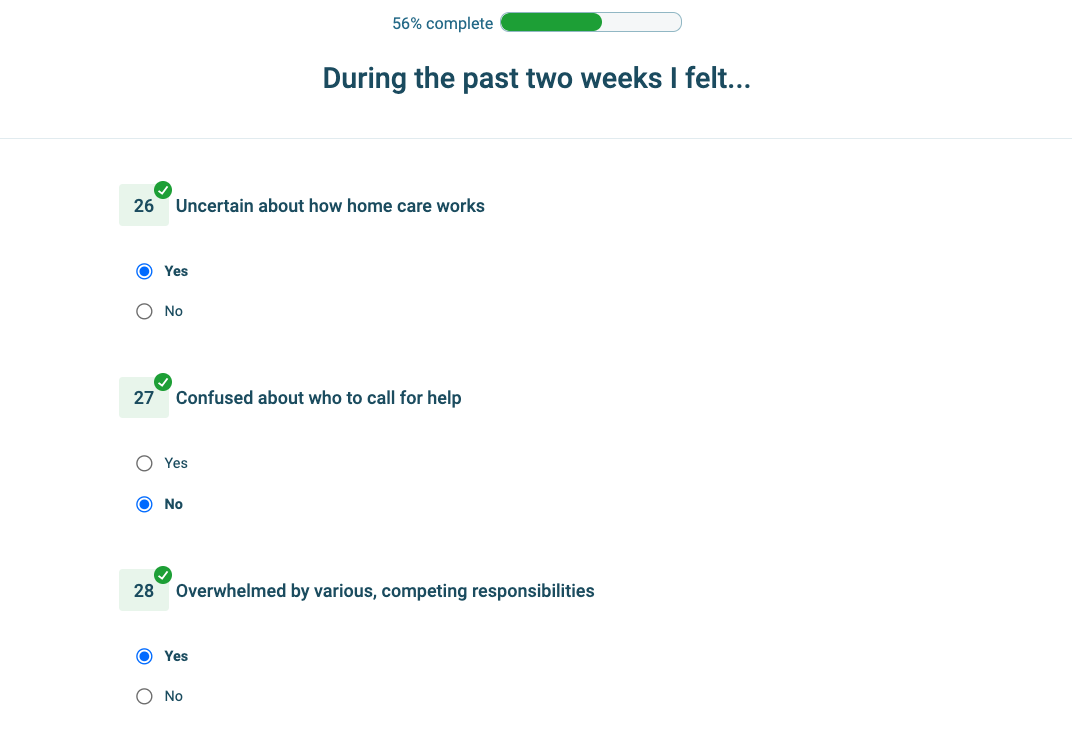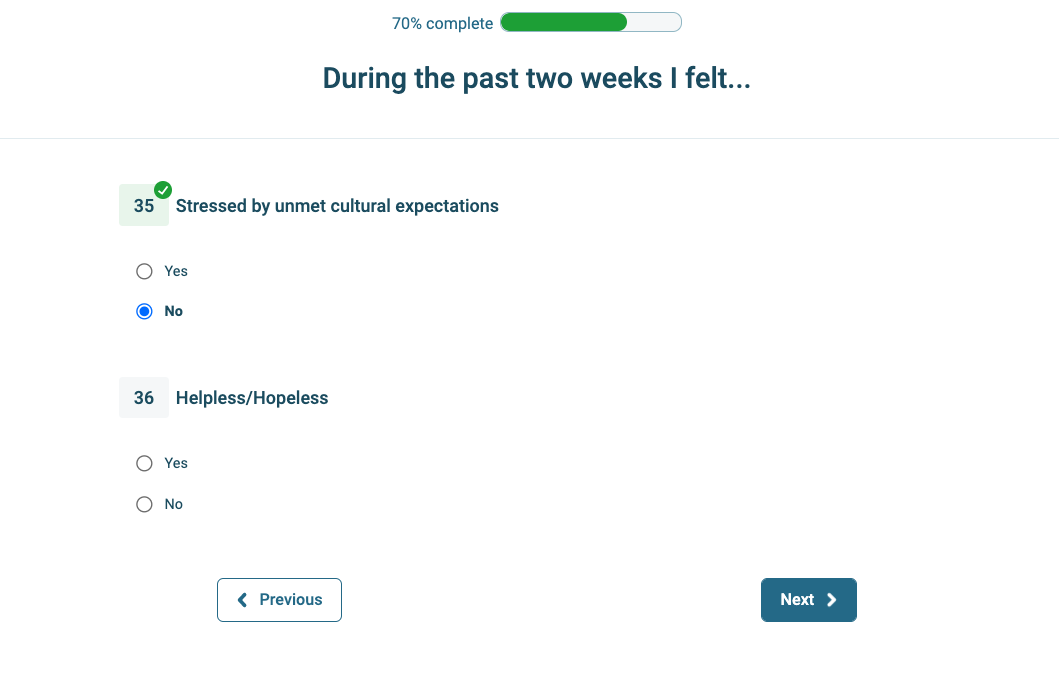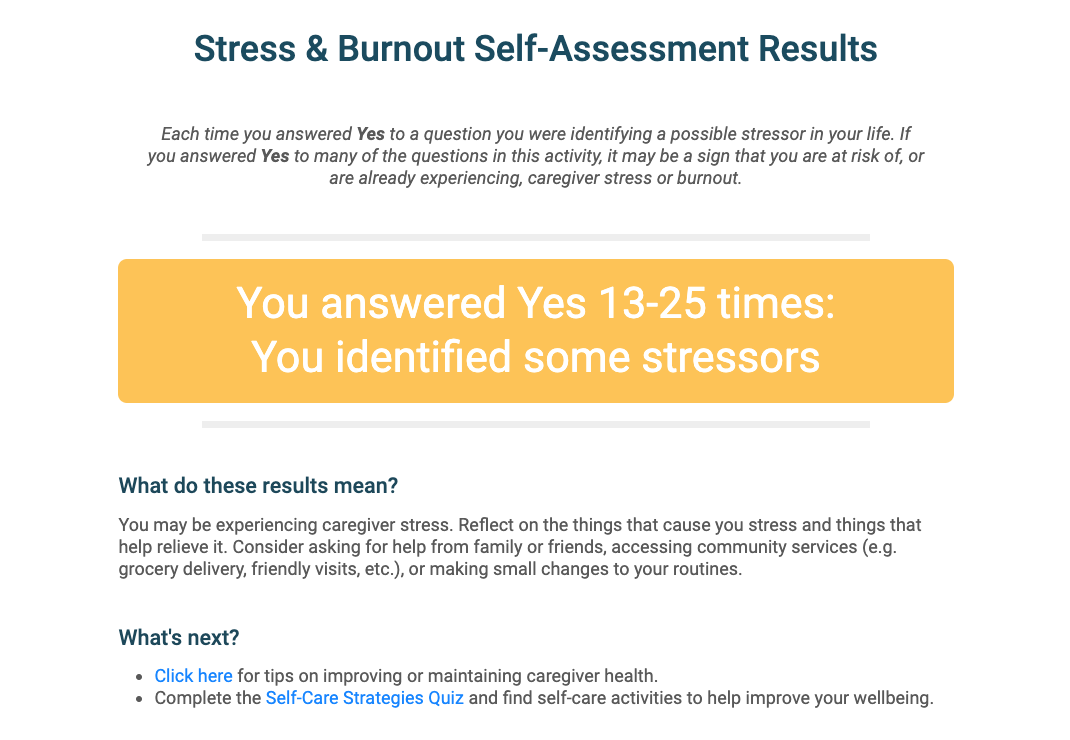What is it?
The Stress and Burnout Self-Assessment helps caregivers determine their level of burnout and stress. This tool should only be used as a guideline and does not replace the advice of health care professionals.
How can it help me?
Use the results of this self-assessment to determine if caregiving responsibilities (along with other life stressors) are negatively impacting personal health.
How to reduce caregiver stress and burnout
- Prioritize your health: If you notice changes in your health or experience feelings of burnout, visit a doctor.
- Support self-care: Check out the Caregiver Health page to find tips for caring for yourself while caring for others.
- Ask for help:
- Ask for help from friends, family, neighbours, or a professional. You don’t have to do this alone!
- Inform your employer about your situation. They may be able to provide options such as flexible or remote working, personal or family leave, or other support.
- Communicate with health care providers: The ICC Coordinator and health care providers (i.e. doctors, nurses, etc.) of the person you care for may have suggestions for easing burnout and making caregiving easier.
- Create a plan: Keep track of health care providers, appointments, and household tasks and store this information in an easily accessible location. Complete the My Care Plan tool to get started.
- Consider respite care:
- When care tasks become overwhelming, consider getting outside help.
- Ask a family member, friend or neighbour to help with small tasks or an occasional visit.
- Look into community day programs or activities that the person you care for could participate in.
- If needed, seek out overnight respite programs for occasional breaks in caregiving.
Stress & Burnout Self-Assessment Preview



Get started